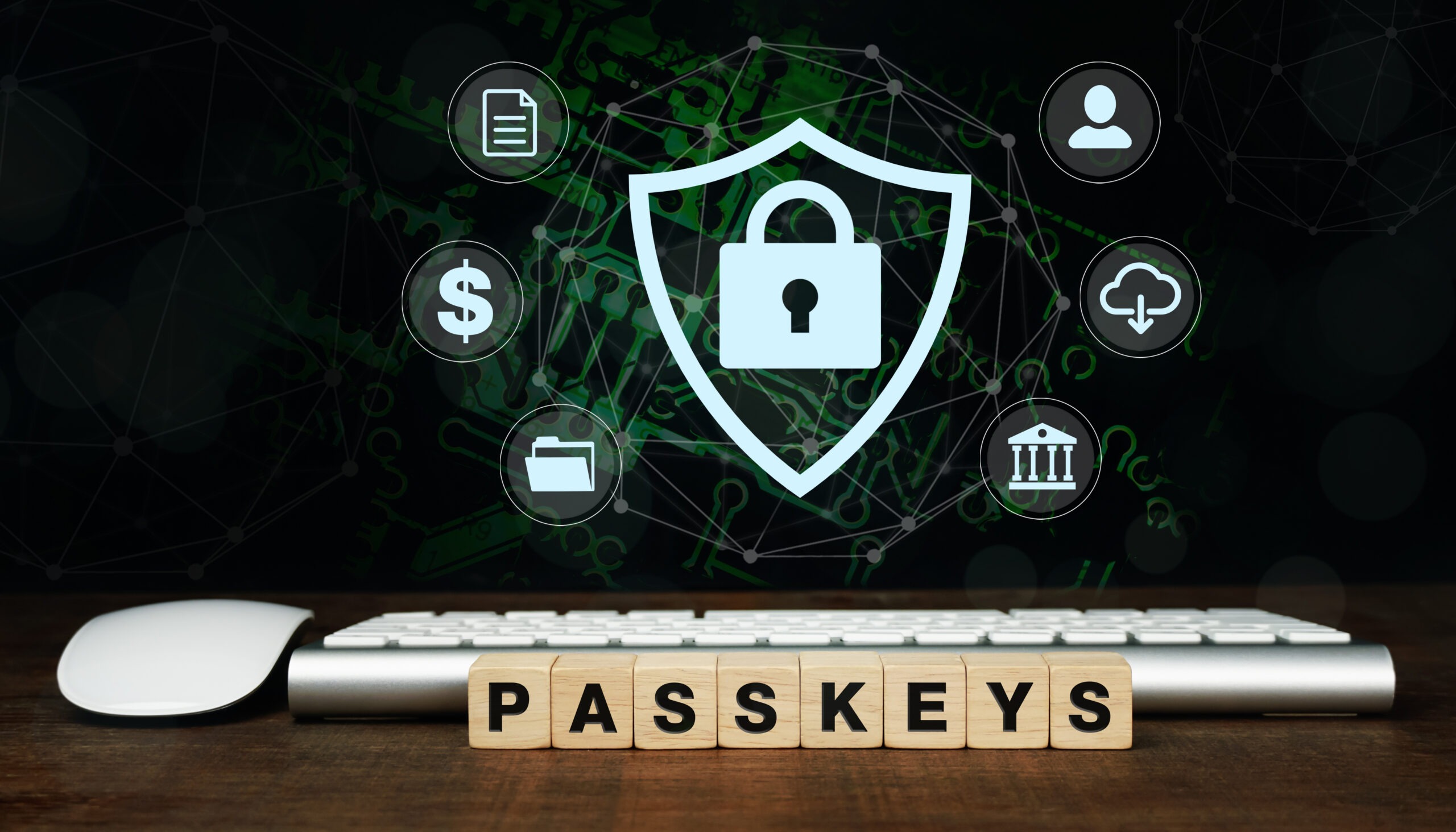Understanding Passwordless Authentication with Passkeys
Today, people, data, and devices are everywhere, and the threat landscape is growing at an unprecedented pace, making the use of traditional passwords insufficient. As cyberthreats evolve, passwords have emerged as the weakest link in our defense against unauthorized access. The prevalence of password reuse and vulnerabilities associated with multi-factor authentication (MFA), SMS, and social engineering further exacerbate the situation. However, there’s a new solution on the horizon – passkeys.
Why Use Passkeys?
The need for passkeys stems from the inherent weaknesses of passwords. Despite efforts to create complex and unique passwords, users often resort to reusing passwords across multiple accounts, making them susceptible to breaches. Additionally, MFA, while effective, can still be compromised through various means. Passkeys offer a more secure alternative, eliminating the reliance on traditional passwords altogether.

How It Works
Passkeys, developed by the Fast Identity Online (FIDO) Alliance, leverage public-key cryptography to provide passwordless authentication. This technology involves the use of a public key and a private key to create a unique passkey for each user. By utilizing cryptographic principles, passkeys ensure secure authentication without the need for cumbersome passwords.
Recent advancements in passkey technology include key material synchronization, enabling seamless authentication across multiple devices. The FIDO2 Alliance has spearheaded the adoption of passkeys, with support from major players like Microsoft Authenticator, iCloud KeyChain, and Google Password Manager. Additionally, the introduction of FIDO2 Alliance standards and WebAuthn APIs has further enhanced the usability and security of passkeys.
Whether you’re a consumer, software provider, or enterprise, adopting passkeys requires certain prerequisites.
As a consumer, you’ll need a device with a secure enclave and biometric authentication capabilities. Software providers and third parties must ensure key material synchronization or isolation to safeguard passkeys.
For enterprise providers like us, involving Identity Provider (IdP) CIAM SaaS Provider and engaging IdP Enrollment and DevOps/DevSecOps architects are crucial for seamless integration and deployment.
It’s Time to Think Differently About Passwords
Passkeys represent a paradigm shift in authentication technology, offering a more secure and user-friendly alternative to traditional passwords. By embracing passkeys, organizations can mitigate security risks, enhance user experience, and stay ahead of cyberthreats. It’s time to unlock the potential of passkeys and usher in a new era of passwordless authentication.

Robert Ochoa
Director, Cybersecurity Sales
Robert Ochoa joined the ANM team in late 2023 after serving in various leadership, networking, and cybersecurity roles across a 25+ year career at Okta, Cisco Systems, Calence Insight Networking, 3Com Corporation, AT&T Bell Labs, International Network Services, and Motorola Inc. Most recently Robert led the U.S. Public Sector SLED West cybersecurity teams at Cisco and Okta.
Prior to his corporate civilian experience as a security professional Robert served five years active duty in the US Army Signal Corps as COMSEC Officer / NCOIC Communication Security, domestic and overseas. His longest and most notable assignments included 7th Infantry Division 2nd Battalion 9th Infantry Regiment and 4th Battalion 229th Advanced Attack Helicopter Regiment. Following active-duty, he served in the Arizona National Guard where he trained various Infantry and Field Artillery teams in combat communication security and land navigation.
Robert’s career roles have included Network Systems Engineering, Cybersecurity Architecture, Product Specialization, Sales Leadership, and his current role as Director, Cybersecurity Sales at ANM. He is responsible for strategic client initiatives across ANM. Robert holds a Bachelor of Science, Business Information Systems degree from University of Phoenix, and several cybersecurity industry certifications.
Robert is a member of the FBI’s Arizona InfraGard, Arizona Cyber Threat Response Alliance, Information Systems Security Association (ISSA) Arizona Chapter, Information Systems Audit and Control Association (ISACA), and the International Information Systems Security Certification Consortium (ISC2). He has lectured at security user groups, large enterprises, colleges and universities, and government agencies around the U.S.
The Growing Cybersecurity Threat in Healthcare
The healthcare sector is increasingly becoming a prime target for cyber-attacks, with dire consequences that extend beyond financial damage. The FBI and Department of Justice now classify cyber-attacks on healthcare as “threat to life” crimes due to their potential to...
MSSP vs. MDR: Which is Right for Your Business?
As cybersecurity becomes more complex, organizations are increasingly turning to third-party providers to help manage their security needs. Two popular options for outsourced cybersecurity are Managed Security Service Providers (MSSPs) and Managed Detection and...
Strengthen Your Cybersecurity with Data Loss Prevention
The threat of data breaches, whether accidental or malicious, looms large over organizations of all sizes. This is where Data Loss Prevention (DLP) comes in as a critical tool in safeguarding sensitive information. But where do you begin when developing a DLP...


